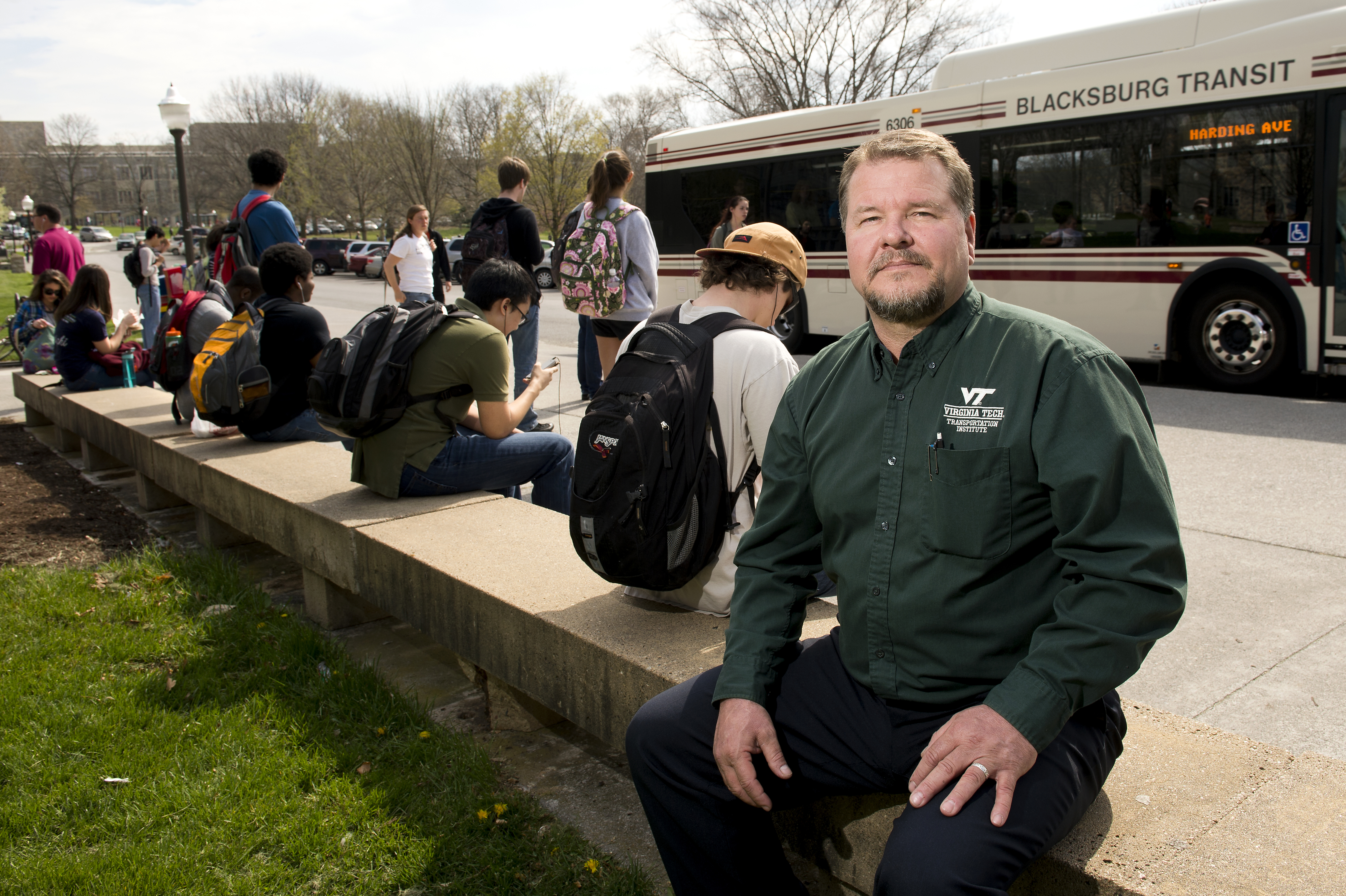Transportation institute teams with Blacksburg Transit to ease wait times, save fuel costs

The Virginia Tech Transportation Institute has teamed with Blacksburg Transit to create a new mobile app that could make waiting for the bus an act of the past and help the transit authority reduce fuel usage.
The new software app -- dubbed BT4U Mobile, still in test stages and set to go fully public at the start of the fall 2014 semester at Virginia Tech -- would eventually allow Blacksburg Transit to provide exact bus arrival time notices at all stops for riders, and eventually move the carrier from a rigid operation with set schedules to a more fluid operation, adding or removing buses to meet real-time rider demand flows.
Riders also will be able to “ping” ahead using the app to request service from pick up to final destination, allowing the transit to create instant better-planned routes with other riders who have similar stops. As the transit improves tracking and accommodates riders’ needs via GPS tracking, it can remove or add bus routes to meet low or peak demand periods. Likewise, it can sub smaller buses for larger ones, or vice versa.
“The project’s end goal is to reduce fuel use and keep unneeded buses off streets that might otherwise add to congestion,” said Andy Alden, a researcher with the institute. After seeing empty buses driving in town late one night, Alden thought more efficient routing system could be made.
“I thought to myself, there has to be a way to run buses only when you need them,” said Alden. “If you knew how many people were waiting, then you could run buses more efficiently. New technology is available that should allow us to assess passenger demand based on historic use and immediate needs.”
Blacksburg Transit operators – including information technology support personnel Tim Witten and Aneil Samuel -- had similar inclinations. They collaborated with Alden and other institute researchers to study the agency’s routing system to better serve customers, and reduce costs and demand on equipment. Funding for the research, the creation of the mobile app, and ongoing work, came from a $1.8 million U.S. Department of Transportation grant awarded to Blacksburg Transit and the institute two years ago.
Blacksburg Transit handles 3.5 million trips per year, with 19,000 to 20,000 trips per week day during the academic year of August through May. Not all riders are Virginia Tech students, but they do represent a great majority of the customer base, according to Fiona Rhodes, a marketing specialist for the transit.
The new app -- developed in partnership with two Virginia Tech Corporate Research Center-based companies, Automation Creations Inc. and Nomad Mobile Guides – will use smart phone data to track demand. Also working on the app and overall study were Andy Edwardes of Severna Park, Md., a master’s student in the departments of civil and environmental engineering and industrial and systems engineering, both part of the Virginia Tech College of Engineering, and Bryan Mayer, a research associate with the institute.
“We are taking user data so we know how many people are taking or waiting for a particular bus, and how many vehicles are needed, if they are needed at all,” said Rhodes, adding that “tripper” buses often sit idling at the ready in case they are needed to carry overflows riders. “What we’re hoping to do is dynamically assign these trippers so we can more predict when and where we will need those vehicles.”
When the carrier sees a sudden demand uptick, the backup buses can be dispatched before riders are left waiting. Wait times would be minimalized, if not entirely removed, said Rhodes. “It’s a more proactive than reactive.”
Indeed, Alden wants to do away with the idea of waiting for the bus, or the bus making stops at empty stops and waiting for people who won’t arrive. “The beauty of that is if you’re sitting in Starbucks and plan on taking the bus, instead of going out to stand in the cold weather waiting on the bus stop you can now wait indoors and walk out at the last minute and catch the bus.”
Alden said he wants to see other college towns and large cities use the app tool . Some city systems, he added, are using decades old scheduling. Moving to adaptive routing approach can save a city thousands of dollars in both fuel and maintenance per year, and cut pollution and congestion. The latter is part of the objective of the federal Transit Investments for Greenhouse Gas and Energy Reduction, or TIGGER, grant.
“We would love to share data with other people and have them share data with us,” said Alden.
Alden and Rhodes well know that not all riders have access to smart phones or mobile apps. Riders can still text or call in requests, and plans are underway to set up monitoring systems – be they cameras or request interfaces – at bus stop shelters so transit operators can pre-count riders and change the schedule and add or remove buses as needed. “We want to make sure this is not a privilege thing,” said Alden.
BT4U Mobile already is available for download as part of a soft test launch via iTunes or Google Play. Android and Apple app versions are planned as the tool is refined to meet customer needs, said Rhodes.




